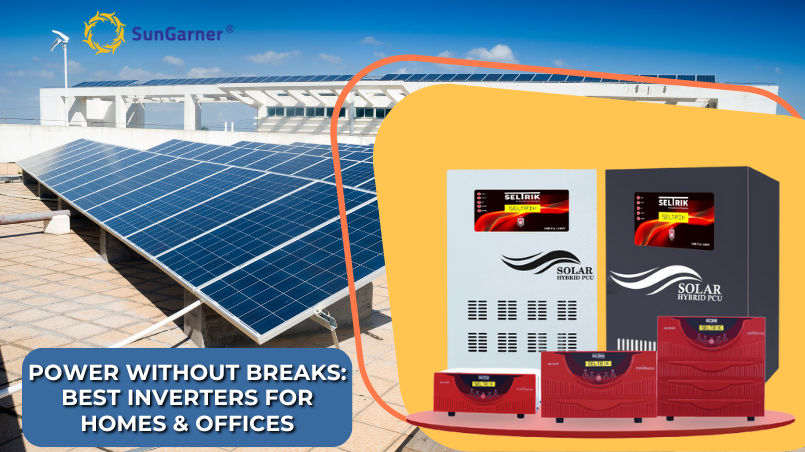Understanding Battery Management Systems (BMS) in the IPP Model - and Why They Matter
As solar, electric vehicles, and energy storage systems continue to grow, understanding Battery Management Systems (BMS) is essential. At SunGarner, we recognize the foundational role a BMS plays in ensuring battery safety, performance, and longevity.
As solar, electric vehicles, and energy‑storage systems continue to grow, understanding Battery Management Systems (BMS) is essential. At SunGarner, we recognize the foundational role a BMS plays in ensuring battery safety, performance, and longevity. This becomes especially important in projects developed under the Independent Power Producer (IPP) model, where large-scale energy assets must deliver consistent output over decades.
Definition
A Battery Management System (BMS) is an integrated electronic system that monitors, protects, and optimizes a battery pack—whether it’s for residential solar, backup storage, EVs, or industrial applications. It manages individual cells or modules to deliver a stable and safe voltage and current supply.
How Do Battery Management Systems Work?
A BMS continuously tracks key performance metrics and protects the battery by keeping it within its Safe Operating Area (SOA). Whether it’s a standalone system or part of a larger SunGarner IPP-based solar-plus-storage project, the BMS performs the following core functions:
- Electrical protection: Prevents issues like overcharging, deep discharging, and overcurrent by monitoring voltage and current across cells.
- Thermal protection: Actively or passively manages cell temperatures, keeping batteries within the optimal range to extend life and enhance safety—particularly vital in large-scale storage deployed by SunGarner Energies.
- Cell balancing: Ensures even charging across all cells through:
Passive balancing: Discharging excess energy from overcharged cells.
Active balancing: Redistributing charge among cells for uniform performance.
- State Estimation & Communication: Calculates real-time values such as:
State of Charge (SoC)
State of Health (SoH)
State of Power (SoP)
It also logs system data and communicates with external systems like energymanagement software, inverters, and SCADA—critical for remote monitoring and control in SunGarner’s utility-scale IPP projects.
Why BMS Matters in the IPP Model
For SunGarner Energies, BMS technology is essential to the success of solar and storage assets developed under the IPP model. In such long-term, performance-driven projects, a BMS ensures:
- Safe operation across all conditions
- Reduced downtime and enhanced asset availability
- Predictive maintenance and data-driven decision-making
- Maximum energy throughput and return on investment (ROI)
Whether powering a home or a multi-megawatt solar farm, SunGarner Energies relies on advanced BMS solutions to ensure the safe, smart, and sustainable use of battery technology across every application.
Types of BMS Architectures
BMS topologies vary based on battery size, cost, and complexity:
- Centralized: A single controller handles the entire pack—cost‑effective but requires heavy wiring.
- Modular: Multiple controllers manage sub‑packs—simplifies maintenance, slightly more expensive.
- Primary/Subordinate: Master controller handles oversight; subordinates collect and report data.
- Distributed: Each cell/module has its own controller—minimal wiring, high fault isolation, higher cost.
BMS in SunGarner Solutions
At SunGarner, we incorporate advanced BMS features into all our solar hybrid inverters and lithium battery packs:
- Comprehensive protection — against over‑charging, over‑heat, over‑current, and deep discharge.
- Smart balancing — both passive and active techniques ensure cells remain uniform.
- State Estimation & Communication — real‑time SoC/SoH monitoring, with remote diagnostics.
- Thermal management — ensures consistent performance across climates.
Our BMS-integrated systems are tailored for residential, commercial, EV, telecom, and industrial applications—prioritizing safety, reliability, and efficiency.
Summary
A Battery Management System is not optional—it’s essential. It ensures:
- Safety
- Maximum performance
- Increased lifespan
- Lower operational costs
Choose SunGarner’s BMS-powered solutions for smarter, safer, and more efficient energy storage.
Frequently Asked Questions
Q. What is a BMS and why is it important?
Answer:
Battery Management System (BMS) is a digital control unit that monitors and manages rechargeable batteries. It ensures batteries operate safely by regulating voltage, current, and temperature—preventing damage and extending battery life.
Q. How does a BMS support long-term performance in IPP-based solar-plus-storage projects?
Answer:
In IPP-based projects, performance guarantees and energy delivery commitments span 15–25 years. A BMS plays a crucial role in meeting these obligations by enabling real-time monitoring, fault detection, and data logging. It helps ensure batteries operate at peak efficiency and within safe limits, reducing unexpected failures and maintenance costs. For SunGarner Energies, a smart BMS is a core component in delivering consistent, bankable performance across our IPP portfolio.
Q. Can a battery function without a BMS?
Answer:
Technically yes, but it’s risky. Without a BMS, batteries are vulnerable to overcharging, deep discharge, overheating, and short circuits—leading to permanent damage or even safety hazards like fires.
Q. What are the key features of a good BMS?
Answer:
An advanced BMS should offer:
- Overcharge & over-discharge protection
- Short-circuit and thermal protection
- Cell balancing
- State of Charge (SoC) & State of Health (SoH) monitoring
- Communication protocols for remote diagnostics
Q. Why is BMS important for IPP solar projects?
Answer:
A BMS ensures safe, reliable, and optimized battery performance—critical for IPP projects where long-term energy delivery and uptime directly impact revenue and project success.
Q. Where is BMS used in real life?
Answer:
BMS is widely used in:
- Solar energy systems
- Electric vehicles (EVs)
- Telecom tower backup systems
- Battery Energy Storage Systems (BESS)
- Uninterruptible Power Supplies (UPS)
Q. How does BMS help in solar power systems?
Answer:
In solar systems, the BMS ensures optimal battery performance by managing charging/discharging cycles, protecting the battery during grid outages, and maximizing energy efficiency—critical for long-term ROI and system reliability.
Q. What’s the difference between passive and active cell balancing?
Answer:
- Passive Balancing: Dissipates excess energy as heat from higher-charged cells.
- Active Balancing: Redistributes energy from high-charge cells to low-charge ones—more efficient but costlier.






_in_the_IPP_Model_-_and_Why_They_Matter.png)


